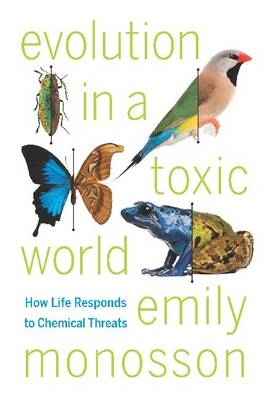
Evolution in a Toxic World
How Life Responds to Chemical Threats
Seiten
2013
Island Press (Verlag)
978-1-59726-977-3 (ISBN)
Island Press (Verlag)
978-1-59726-977-3 (ISBN)
- Titel z.Zt. nicht lieferbar
- Versandkostenfrei
- Auch auf Rechnung
- Artikel merken
With BPA in baby bottles, mercury in fish, and lead in computer monitors, the world has become a toxic place. The author traces the development of life's defence systems - the mechanisms that transform, excrete, and stow away potentially harmful chemicals - from over three billion years ago to today.
With BPA in baby bottles, mercury in fish, and lead in computer monitors, the world has become a toxic place. But as Emily Monosson demonstrates in her groundbreaking new book, it has always been toxic. When oxygen first developed in Earth's atmosphere, it threatened the very existence of life: now we literally can't live without it. According to Monosson, examining how life adapted to such early threats can teach us a great deal about today's (and tomorrow's) most dangerous contaminants. While the study of evolution has advanced many other sciences, from conservation biology to medicine, the field of toxicology has yet to embrace this critical approach. In "Evolution in a Toxic World", Monosson seeks to change that. She traces the development of life's defence systems - the mechanisms that transform, excrete, and stow away potentially harmful chemicals - from over three billion years ago to today. Beginning with our earliest ancestors' response to ultraviolet radiation, Monosson explores the evolution of chemical defences such as antioxidants, metal binding proteins, detoxification, and cell death.
As we alter the world's chemistry, these defences often become overwhelmed faster than our bodies can adapt. But studying how our complex internal defence network currently operates, and how it came to be that way, may allow us to predict how it will react to novel and existing chemicals. This understanding could not only lead to better management and preventative measures, but possibly treatment of current diseases. Development of that knowledge starts with this pioneering book.
With BPA in baby bottles, mercury in fish, and lead in computer monitors, the world has become a toxic place. But as Emily Monosson demonstrates in her groundbreaking new book, it has always been toxic. When oxygen first developed in Earth's atmosphere, it threatened the very existence of life: now we literally can't live without it. According to Monosson, examining how life adapted to such early threats can teach us a great deal about today's (and tomorrow's) most dangerous contaminants. While the study of evolution has advanced many other sciences, from conservation biology to medicine, the field of toxicology has yet to embrace this critical approach. In "Evolution in a Toxic World", Monosson seeks to change that. She traces the development of life's defence systems - the mechanisms that transform, excrete, and stow away potentially harmful chemicals - from over three billion years ago to today. Beginning with our earliest ancestors' response to ultraviolet radiation, Monosson explores the evolution of chemical defences such as antioxidants, metal binding proteins, detoxification, and cell death.
As we alter the world's chemistry, these defences often become overwhelmed faster than our bodies can adapt. But studying how our complex internal defence network currently operates, and how it came to be that way, may allow us to predict how it will react to novel and existing chemicals. This understanding could not only lead to better management and preventative measures, but possibly treatment of current diseases. Development of that knowledge starts with this pioneering book.
Emily Monosson is an environmental toxicologist, writer, and consultant. She is an adjunct professor at the University of Massachusetts, Amherst, Associate Editor of the Encyclopedia of Earth, and the author of Motherhood the Elephant in the Laboratory: Women Scientists Speak Out. She lives in Montague, Massachusetts.
| Erscheint lt. Verlag | 1.6.2013 |
|---|---|
| Verlagsort | Washington |
| Sprache | englisch |
| Maße | 153 x 229 mm |
| Themenwelt | Sachbuch/Ratgeber ► Gesundheit / Leben / Psychologie |
| Studium ► 2. Studienabschnitt (Klinik) ► Pharmakologie / Toxikologie | |
| Naturwissenschaften ► Biologie ► Biochemie | |
| Naturwissenschaften ► Biologie ► Evolution | |
| Naturwissenschaften ► Biologie ► Ökologie / Naturschutz | |
| Naturwissenschaften ► Chemie ► Analytische Chemie | |
| Technik ► Umwelttechnik / Biotechnologie | |
| ISBN-10 | 1-59726-977-8 / 1597269778 |
| ISBN-13 | 978-1-59726-977-3 / 9781597269773 |
| Zustand | Neuware |
| Haben Sie eine Frage zum Produkt? |
Mehr entdecken
aus dem Bereich
aus dem Bereich
Buch | Hardcover (2024)
Thomas Karow (Verlag)
CHF 79,95
Buch | Hardcover (2022)
Urban & Fischer in Elsevier (Verlag)
CHF 138,60


